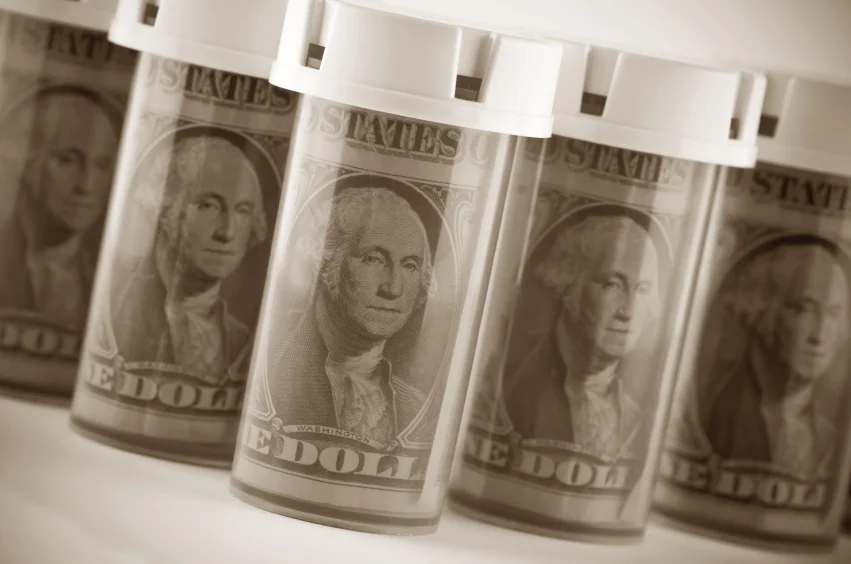Everyone is talking about pharmaceutical costs. We all know that prescription drugs are becoming unaffordable for many patients and plans, and while many programs tout pharmacy savings and decreased drug spend, it is impossible to cut costs if you don’t know how your money is being spent.
So, how are your pharmacy dollars being spent?
Some pharmacy costs may be summarized in a PBM performance report or brand vs generic spend percentages, but to really gain visibility into the granular pieces of your drug spend you need to dig into your data. While each group’s pharmacy claims are unique, most share basic elements that drive costs: drug claims, participants, pharmacies, PBM contracts and doctors. Here is a look at how each of those categories impact your total pharmacy spend.
DRUG CLAIMS
Brand or generic? Brand name drugs are often significantly more expensive than generics, and if your participants are being prescribed and filling more brand name drugs your plan is overpaying. For example, the popular brand name drug Livalo, used to lower cholesterol, costs on average $312.41 per month, while the generic alternative, Atorvastatin, costs $9.00 per month. A switch from brand the generic in this instance saves $303.41 per month, or $3,640.92 annually.
A relatively newer subset of brand name drugs, specialty drugs come with an even higher price tag. Specialty drugs are typically used to treat chronic conditions like multiple sclerosis and often have special requirements for administration, monitoring, and handling. These drugs usually require pre-authorization and can cost thousands of dollars a month for the rest of a patient’s life. However, specialty drugs also have lower cost alternatives. Often three low-cost alternatives to specialty drugs can save a plan over $100,000.
Generic drugs and lower-cost alternatives to specialty drugs are just as safe and effective as their more expensive counterpart, and if you aren’t looking for a way to help your members make a switch, you are wasting thousands of dollars each month.
PARTICIPANTS
While many aspects surrounding your pharmacy plan are out of your control, such as the age of the member population or the specific health conditions being treated, looking at the pharmacy habits of participants can give you a more holistic view of how your plan spend is being used. Factors such as how frequently they fill their prescriptions (once a month on schedule or sporadic?), where they fill their prescriptions (local pharmacy or mail order?), and how they pay (copay or coupons?) can help you understand where, when, and how your pharmacy dollars are utilized by your members. This valuable insight can help you design wellness programs and make better-informed decisions concerning your plan as a whole.
PHARMACIES
Are your participants using pharmacies that give your plan the best deal possible? A recent study by a U.S. Public Interest Group [1] showed that consumers can save between $100 and $5,400 annually just by price shopping pharmacies. While this study looked at the cash price of hundreds of drugs, the insurance price is also highly dependent on the structure of a specific pharmacy plan. Your participants may pay the same standard or tiered copay amount no matter where they purchase their prescription, but the cost to the plan can vary drastically between pharmacies due to differing network contracts, dispensing fees, and PBM rebates. Comparing the most frequented pharmacies with the ones most beneficial to your plan can allow you to begin tracking pharmacy dollars wasted at the pharmacy counter.
PBM CONTRACT/PERFORMANCE
Mistakes due to human error are not uncommon when processing claims, which can have a significant compounding effect on the cost to the plan. In addition, network contracts with specific pharmacies, rebate structures, and the selection or exclusion of certain NDCs can all impact pharmacy spend. These seemingly small details are often individually overlooked. For every rebate dollar attained a plan is usually missing out on a savings opportunity of three to four dollars in net pharmacy spend, which can cause payers to unnecessarily lose hundreds of thousands of dollars over time.
Don’t ignore the issue until renewal time. Keeping a close eye on your PBM contract will allow you to gain an edge in negotiating and enhancing it and will save you valuable time and money which compounds over time.
DOCTORS
Participant habits, pharmacy agreements, and PBM contracts can all impact where and when your pharmacy dollars are spent, but doctors are the key to what they are spent on. Doctors write the prescription, which gives them the final say to choose what drug will most effectively treat a condition.
However, doctors’ prescribing habits are often influenced by factors not related to their medical expertise, such as limited consulting time, lack of pharmacy knowledge, formulary restrictions, and marketing pitches from big pharma. Studies have shown that some physicians prescribe specific high cost drugs more often after receiving gifts from pharmaceutical reps [2] . A lack of physician knowledge about the actual price of these high cost drugs also contributes to a greater number of more expensive drugs being prescribed instead of a low cost alternative.
Tracking prescribing can allow you to see which drugs are being prescribed the most and can also indicate why those drugs are being chosen. If you find a way to educate your plan’s doctors on the actual cost of the drugs they are prescribing, you can likely tap into a significant source of savings on your pharmacy spend.
FIND YOUR MONEY
Finding ways to cut pharmacy costs can be messy and often requires a hefty financial investment, but any solution must start with understanding exactly how your pharmacy dollars are spent. Stop relying on broad-brush reporting from your PBM or insurance carrier. Dig into your drug claims, participant, pharmacy, doctor, and contract data to track every pharmacy dollar and save more of them.
[1] Prescription drugs can vary by thousands depending on where you buy them
[2] Do drug company payments to doctors influence which drugs they prescribe?
Published: Mar 4, 2021

